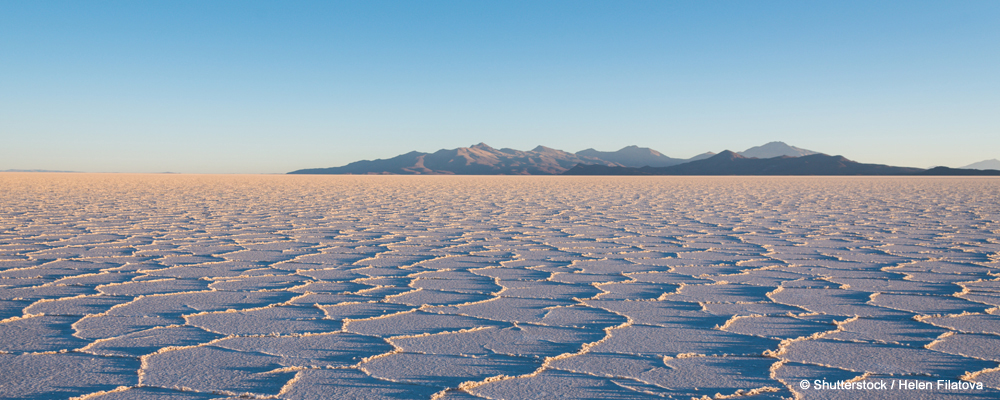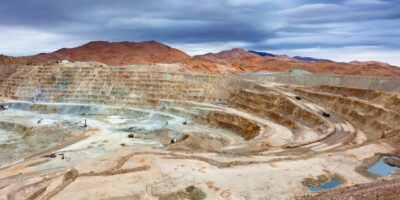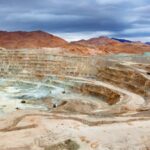Found in batteries, electric vehicles or laptops, lithium is an important resource in modern society. Today, most of the world’s lithium is extracted from brine water deposits, such as salars, making it vital for us to find ways of managing water while also protecting the environment.
To explore the topic, we dialled up Robin Dufour, Managing Director at DHI in Peru, to have a chat about lithium mining and how digital tools along with cloud computing can be used to achieve the best results with the least environmental impact.
Q: Hi Robin! First, why do we need to manage water in lithium mining?
In lithium mining, the lithium is within the water. Water is pumped from the salar and this water contains dissolved lithium. It’s not like traditional mining where you mine the minerals and water is a separate challenge you have to address. Hence, water is the core of the project in lithium mining.
Q: In connection to this, could you share some of the main challenges related to lithium mining?
Managing water is important in order to minimise the amount of water that is taken from the salar. Usually, the mined water is not freshwater. The water quality is very saline because it contains different kinds of dissolved ions. Nevertheless, even if the water is only pumped from high-lithium concentration areas, there is a potential of this affecting water levels in nearby locations. Therefore, it is essential to be aware of how both water and the lithium is extracted from the salar in order to minimise possible effects on the rest of the water system. This requires a lot of field work, monitoring and numerical modelling, especially when we always make it a point to uphold the ‘environment first’ mindset.
Q: What can be done to address these challenges and mitigate the impact?
There are a number of things that can be done. On the numerical side, models are used to find the ideal location of placing pumping wells within the salar in order to maximise the extraction of lithium, or other dissolved ions, while at the same time minimise the effect on the environment. This is where DHI gets involved by offering digital tools and optimising pumping schemes for lithium mining while maintaining an environmental balance.
Q: In a time where digital tools and technologies are getting a lot of attention, how can they be used to manage lithium mining?
With digital tools, it is possible to model many different scenarios to identify the best location for the wells in the field. Without a model, it is hard to find the optimal position of the well. Therefore, it is essential to build a network of groundwater observation wells in the field and calibrate the model based on data from the test wells. Once the model is built, various different scenarios can be created and tested. This allows us to understand the possible impact much better while at the same time take environmental uncertainties into account.
In this way, modelling supports the mine operator with the best locations for the wells. This is key since the model is also used as part of environmental impact assessments (EIAs), which is required to continue operations. For this reason, mine operators need a viable solution to extract the lithium without impacting the surrounding environment. It is hard to imagine how this is done effectively without numerical modelling due to the geological complexity within the salars.
Moreover, new technology such as cloud computing facilitates optimisation processes that require multiple model iterations. It takes a lot of computing power to create 1000s of scenarios and figure out where to place the well in the salar. By using cloud computing, the best well position can quickly be found. Before cloud computing was available, wells were manually placed in the model, which was time consuming. Large amounts of manual work can now be done automatically in the cloud.
Q: How does the cloud enable such automatic workflows?
In itself, the cloud works as a supercomputer. For example, an algorithm can create 10000 possible positions for the pumping well. From the 10000 possible positions, 10000 models are required. This number of scenarios will be too time consuming to create using a single computer. With an algorithm that creates the solutions to the different scenarios, cloud computing enables decision makers to run 10000 models simultaneously, and quickly analyse the results in order to choose the optimal position of the well. Due to the high number of possible well positions, it is really about computer capacity when running a very large number of numerical simulations. This is where cloud computing makes a huge difference.
Environmental sustainability is something that DHI feels strongly about, and in whatever we do, we strive to work with nature to achieve a balanced outcome. To learn more about digital tools and mine water management, contact us to discover our various integrated mining solutions to ensure your mine runs efficiently with minimal impact on the environment.








